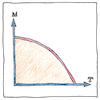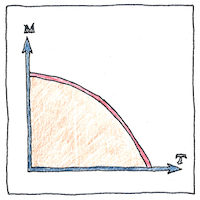Pierre Curie
metrology

|
Curie’s law
The magnetization of a paramagnetic material is directly proportional to the strength of the exterior magnetic field and inversely proportional to the temperature of the material. What’s going on here? Pierre Curie discovered this effect and explained that paramagnetic bodies are like perfect gases . . . Ah . . . What the heck are perfect gases? I would have to guess—because it’s difficult to pick a path through a forest of equations— that magnetization results from particles in alignment but heat jiggles the particles out of skew.
Magnetic thermometer
Curie’s law is the basis of the magnetic thermometer for measuring very low temperatures, not to be confused with a thermometer that has a magnetic mount.
Magnetic susceptibility
All materials are either intrinsically magnetic or are susceptible to becoming diamagnetic or paramagnetic under the influence of an external magnetic field. Your magnetic susceptibility depends on the sum of the spins of your unpaired electrons or on the magnetic moments of your electron orbits. If all materials were strongly diamagnetic then your levitating vehicle could go anywhere. For a major investment, we seek to make this a reality. Your basic magnetic personality is totally orthogonal; that is, that has nothing to do with it, or, depending on your gullibility, is related to the percentage.



Pierre Curie built a sensitive torsion balance to measure the magnetization of paramagnetic bodies. The torsion balance was invented by John Michell and used by Henry Cavendish to measure the density of the earth, and by Charles-Augustin de Coulomb to derive the inverse-square law.
Pierre Curie also showed that above a certain transition point, known as the Currie temperature, a ferromagnet loses its intrinsic magnetization. Above that temperature, however, it still responds as a paramagnet to an external magnetic field.
See also in The book of science:
Readings in wikipedia: